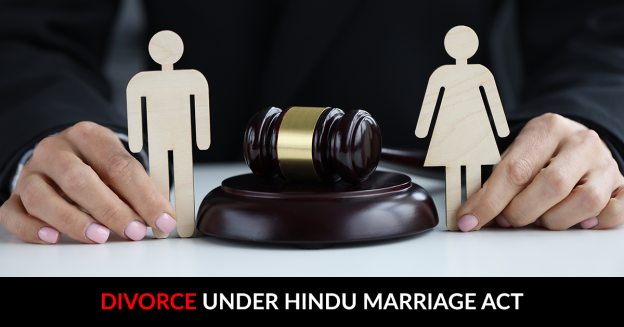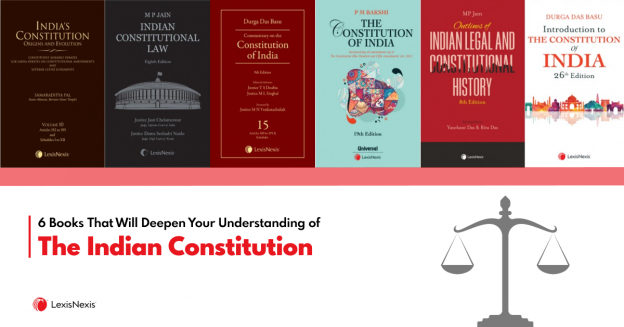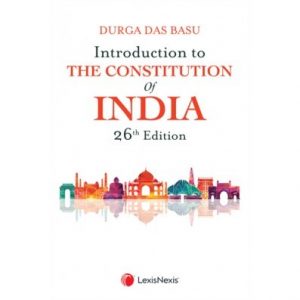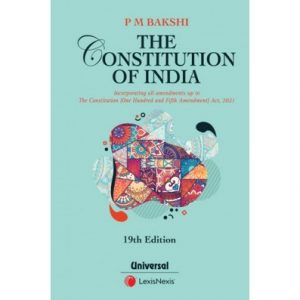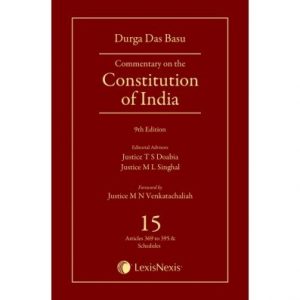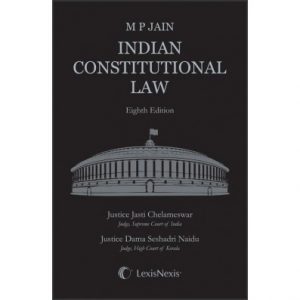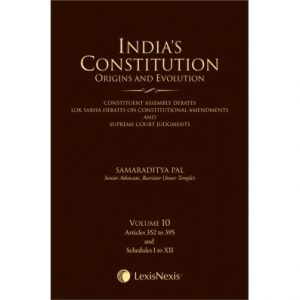Marriage is one of the most important institutions in our culture. However, marriage as one of the most intricate partnerships is hard to maintain; especially in today’s times where people have easily started seeking divorces. This is where the need for HMA–Hindu Marriage Act helps to save marriages and families from falling apart.
The Hindu Marriage Act came into force in the year 1955, it helps to form uniformity of laws among the Hindus. Whenever needed, the law helps people to file for a Divorce Under Hindu Marriage Act, as per the sections permitted by the law.
Marriages are one of the most complex and highly emotionally and financially invested relationships in the world. The purpose of this act is to safeguard the rights of the Marriage as per the Hindu marriage act for both, the bride, and the groom.
Application of Hindu Marriage Act—
(1) This Act applies—
- (a) to any person who is a Hindu by religion in any of its forms or developments, including a Virashaiva, a Lingayat or a follower of the Brahmo, Prarthana or Arya Samaj,
- (b) to any person who is a Buddhist, Jaina or Sikh by religion, and
- (c) to any other person domiciled in the territories to which this Act extends who is not a Muslim, Christian, Parsi or Jew by religion, unless it is proved that any such person would not have been governed by the Hindu law or by any custom or usage as part of that law in respect of any of the matters dealt with herein if this Act had not been passed.
The following persons are Hindus, Buddhists, Jainas or Sikhs by religion, as the case may be:
- (a) any child, legitimate or illegitimate, both of whose parents are Hindus, Buddhists, Jainas or Sikhs by religion;
- (b) any child, legitimate or illegitimate, one of whose parents is a Hindu, Buddhist, Jaina or Sikh by religion and who is brought up as a member of the tribe, community, group or family to which such parent belongs or belonged; and
- (c) any person who is a convert or re-convert to the Hindu, Buddhist, Jaina or Sikh religion (THE HINDU MARRIAGE ACT, 1955, n.d.)
A brief history of the act
Divorce, as a legal option for separation, was identified and practiced in British India in the year 1869 which was majorly for the Christians seeking divorce lawfully. In India, there was no legal framework that could formalize a divorce or allow for it. Later in the year 1955, the Hindu Marriage Act was formed, to enable people to file for a Divorce Under Hindu Marriage Act.
Importance of understanding the act
The Hindu Marriage Act is a very important law that needs to be understood by each individual before they get into a formal marriage setup. If not in detail, a brief knowledge about the law and its importance can help both, the bride and the groom to understand the seriousness and the consequences if they take things lightly. Hindu Marriage Act helps to establish some fundamentals and safeguard the rights of the both bride and the groom.
It includes:
Bigamy
As per the Hindu Marriage Act, a man is not permitted to have multiple wives at the same time. A man needs to legally divorce his first or present wife in order to marry another woman. In case he does not he is liable to get penalized as per the sections 494 and 495 of the Indian penal code, 1860.
Marriage age
The appropriate age and the minimum age to get married is set by the legislation of India. it is a minimum 21 years for boys and 18 years for girls. If they get married before their marriage will not have any legal standing and the married couple might be liable for legal obligations.
Restitution of conjugal rights
This means that when either party withdraws from the marriage without any reasonable or legal excuse, their partner can reach out to the court for restitution of conjugal rights. This helps to safeguard the marriage and preserve its sanctity.
Mental stability
A marriage is considered null and void if anyone one or both the people get married being mentally unfit. In such cases, the couple must get legal consent before getting married. These are stated in sections 5(ii)(a),(b), and (c) of the Hindu marriage act.
Marriage ceremonies
In case a couple gets married using the customary rituals and rights, their marriage is considered legal and they are lawfully bound. Hence, any child born out of this kind of marriage is a legal responsibility and an obligation of the father (the groom) as it is considered legal.
Relevant provisions related to Divorce under the Hindu Marriage Act,1955
Recently, the Supreme Court announced that using the power listed under the Article 142 (gives Supreme Court the power to practice complete justice) they can declare any marriage as dissolved or grant a divorce decree if it has broken down irretrievably. This helps people to bypass the waiting period and approach the Supreme Court directly.
Now, let’s look at various sections under the Hindu Marriage Act:
Section 10
Section 10 of The Hindu marriage act talks about the judicial separation and explains the process for lawfully getting a divorce; it includes filing the petition in the family court. The ground for separation and sections (if required) can be mentioned in the petition as per sections 13 (i) and (ii) (different parts). Read on to know about this section also.
Section 5
Section 5 of the Hindu Marriage Act underlines the conditions for a Hindu Marriage. It is noteworthy to understand that the conditions are discretionary and not mandatory, hence it is usually said that “the marriage ‘may’ be solemnized under the following conditions’. These conditions include:
- (i) Neither the groom nor the bride is married at the time of marriage.
- (ii) None of them is incapable of giving consent to the marriage or is incapable mentally to get married. Also, none of them has any issues like recurrent attacks of insanity or epilepsy;
- (iii) Both are of or have crossed the marriage age as underlined in the legislation of India, that is 21 years for the boy and 18 years for the girl.
- (iv) none of them falls under the category of prohibited relationship unless the custom or usage governing each of them permits them for marriage.
- (v) The parties are not sapindas unless their religion or custom allows for it.
Section 13
Section 13 is a detailed section that contains several conditions for getting a Divorce Under the Hindu Marriage Act. There are different grounds defined under this section that can be permitted in the courts of law for divorce. It is important to know that Clause 1-A, introduced in the HMA 1955 provides grounds for divorce by either party, however, Clause 2 of Section 13 provides grounds to seek divorce only for the females.
- Section 13-1 includes grounds like (i) conversion-conversation of a Hindu to any other faith like Parsis, Christianity, Islam, or any other that are not part of Hinduism (Buddhism, Jainism, Sikhism,) (ii) Insanity-any mental illness for an indefinite period or any mental disease that is unreasonable under the eye of law for any human being to live with. (iii) Veneral disease, (iv) Presumption of death.
- Section 13-2 include grounds like Bigamy, Rape, sodomy or bestiality, Decree or order of maintenance (this is subject to issue under section 18 of HMA, or section 125 of the Penal Code-any of these two can help the wife to file a divorce petition), the wife has been living separately, marriage happened before the age of 15 (can file divorce before reaching the age of 18 years), and both the partners have been living separately for at least one year.
Section 14
Section 14 for Divorce Under the Hindu Marriage Act, 1955 prohibits the dissolution of any marriage if the marriage has not elapsed one year since the date of marriage. However, exceptions can be there provided the sections and enough proof are provided while filing the petition. Indian Marriage Act supports that all marriages must be given a fair chance of reconsideration and reconciliation considering the mental, emotional, and financial investments and damages it can cause to both the parties and is considered seriously if any child (or children) are born out of that marriage.
Section 15
Section 15 of the Hindu Marriage Act defines the rights of both the parties for marrying again once the divorce decree is granted. The period is defined based on any new or existing appeal against the decree. Until any appeal exists and is not dismissed in the court of law, against any party, the rights of marrying lawfully stand null and void.
Related Books:
“Hindu Law of Marriage and Divorce” by Sukdev Singh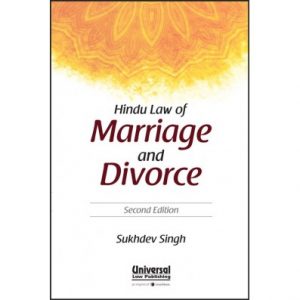
“Indian Law of Marriage & Divorce” by Kumud Desai
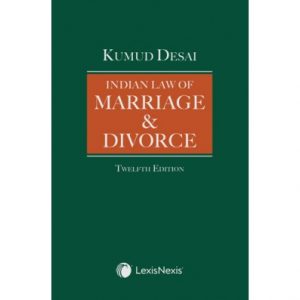
Why does divorce happen in society?
Marriage, as an institution has evolved in a lot of forms over the past few decades. some of the major and popular reasons for getting a divorce are physical and mental abuse, dowry, rape, and more. However, before getting on the sociological perspectives, it is important to know that the grounds under section 13-2 for Divorce Under the Hindu Marriage Act, 1955 are often abused by females nowadays. This is where it becomes difficult for the courts also to decide the result of the case. Nevertheless, divorce is a mutual decision and is made based on multiple reasons where the majority of the cases are filed by females (almost 69%*) as compared to men. Below are a few major reasons that result in divorce:
- Independence of Indian women: Most of the women working in metro cities seek freedom of speech and independence and considering that the Indian traditional values and cultures may often interfere with this demand, this is one of the major reasons for divorce today.
- The communication gap in marriages: Men and women both are raised in India in different ways and open communication is often misinterpreted. This is the second major reason for divorce in India.
- Cheating and Affairs: Infidelity is one of the major reasons that make it difficult for both the husband and the wife to continue living together as it makes a lot of emotional and psychological damage, resulting in divorce.
- Problems with In-laws: It may sound cliched, but problems with in-laws are not a new reason for divorce. However, with changing times women have been more outspoken about it and hence this is also one of the common and most popular reasons for divorce.
- Procreative problems in marriage: This includes two types of situations; having different opinions on having a child; and not being able to conceive that could be because of the wife or the husband.
Grounds of Divorce
- Adultery: having an extramarital affair or sexual relationship with someone outside of marriage.
- Cruelty: this includes unjustifiable behavior that harms physically, mentally, or emotionally.
- Desertion: abandonment of the partner by the other one, without consent of any reasonable cause.
- Conversion to Another Religion: As stated above, conversion from Hindu to any other religion that is not part of the Hindu religion.
- Mental Disorder: any mental illness that makes it practically, and emotionally impossible for two people to stay together.
- Communicable Disease: This includes STDs or any other type of disease that can be fatal for the other partner.
- Renunciation of the World: This is when either partner has gone out of the marriage leaving all material things to pursue any religion or any kind of faith, and abandoned their family in all forms.
- Presumption of Death: When a partner goes away, gets lost, or is not found or has any record in any form and is not found for 7 years or more, he/she is presumed dead and the petitioner can seek divorce Under the Hindu Marriage Act, 1955.
- Unsound Mind or Suffering from Continuous Insanity: Any mental disorder that has an indefinite period of cure, or doesn’t have a treatment; in this case, the petitioner has all valid and medical reasons for not staying with the partner and can file for a divorce.
Types of Divorce Petitions
Divorce with Mutual Consent
This is when both parties agree to mutual divorce; they get the memorandum of understanding prepared with their respective lawyers based on which the final petition is created and filed in the court.
Divorce without mutual consent
This is where either party is not ready for divorce and the divorce decree is obtained when the petitioner files the petition in court and the decree is granted solely by the family court as per all the facts presented before them.
Divorce Notice
This is an official and legal document that is sent by the petitioner to their partner which indicates their intention and also works as a final warning where they can think and disease wisely, before getting into any legal battle.
Procedures of Divorce (Detailed study under the Hindu Marriage Act 1955)
- Step #1: Petition on behalf of both parties i.e., both the partners (husband and wife) is submitted in the family court by their respective lawyers. This petition contains all details pertaining to the separation of both parties, their terms, and pieces of evidence required for the divorce.
- Step #2: A specified date is given to both parties when they have to be present before the family court along with their respective counsels for scrutinizing every aspect of the petition, family backgrounds, properties owned, the reason for divorce, kids custody (if applicable), ID proofs, and more.
- Step #3: Before this, the courts may also send the parties for mediation–to explore chances of reconciliation as Hindu marriage is regarded as sacred and is a bond of Indissoluble nature or permanent bond. However, if both parties deny for reconciliation, the proceedings take place as per the family court.
- Step #4: After examining carefully and checking pieces of evidence and statements of both parties, the family court judge has full authority to add or get conditions modified as per the law in case there is any issue related to alimony or maintenance amount & agreement, or if any child custody or visitation rights involved. It is not limited to these conditions though. After this, the first motion is passed and parties are given a time for 6 months to reconsider their decision and try to reconcile if they still have any chances. This period can be extended to 18 months from the date of the petition in the family court.
- Step #5: During the waiting period, if both parties try to reconcile and want to stay together, they can appeal for cancellation of the divorce through their counsel. However, if either party disagrees to reconcile, their divorce is proceeded as per the order, and in the second motion (as per the given date by the family court), the final statements of each party are recorded before the family court.
- Step #6: Once the statement is recorded, the full and final agreement between the parties is signed by the spouses so that there are no conflicts and differences thereafter for any alimony, maintenance, or child custody.
- Step #7: Once the court is satisfied by each side and there is no chance for reconciliation in the final motion also, the court grants the divorce decree and the Marriage gets void and invalid.
Maintenance and Alimony
- Understanding Maintenance and Alimony: Maintenance and alimony in simple terms is the financial support that a person has to give to their spouse as per the order of the court, irrespective of their divorce status.
- Maintenance During the Divorce Proceedings: Interim maintenance is a decided amount of money that is given by one partner to another for fulfilling their needs during the proceedings. This also helps to ensure that the receiving party is not short of funds and is not weaker while contesting the case.
- Maintenance After the Divorce Proceedings: This is a decided amount that one partner has to give to their separated partner once the divorce is granted. In case the payer fails to give the maintenance after the divorce, the receiving party can again go the court to get legal support.
- Factors Considered When Deciding Maintenance and Alimony: While the court decides on maintenance and alimony, a lot of factors are taken into consideration such as future expenses, lifestyle expenses, costs of education in case of children/child, inflation, and medical expenses, and more. However, the amount is decided as per the financial ability of both parties and enough proof of their financial standings. It need not be unrealistic. However, once decided, the giver is bound to provide financial maintenance and alimony as decided and cannot shy away from their responsibility.
Conclusion
Seeking divorce Under the Hindu Marriage Act, of 1955 is a crucial step for any couple. It should be a thoughtful decision as it can drain you emotionally, psychologically, and financially. Understanding different sections helps make a wiser decision.
It is important to hire a lawyer for the proper filing of your case; they are well informed and understand the difficulties and nuances of divorce proceedings and can foresee any challenges better than a layman.
It is easier to ask for divorce than to contest for it and finally get it. It can take anywhere from 1 year to 10 years or more, for any couple to get a divorce decree depending on the nature of the case and the agreement of both parties.
LexisNexis® Store is a perfect destination for all additional resources, bare acts, books on divorce, and the Hindu Marriage Act of 1995. The technology used by LexisNexis® helps readers to record their research work, access any resource while on the go and save the history for easy re-research.
Explore new Criminal Laws in this blog: New Criminal Laws in India

